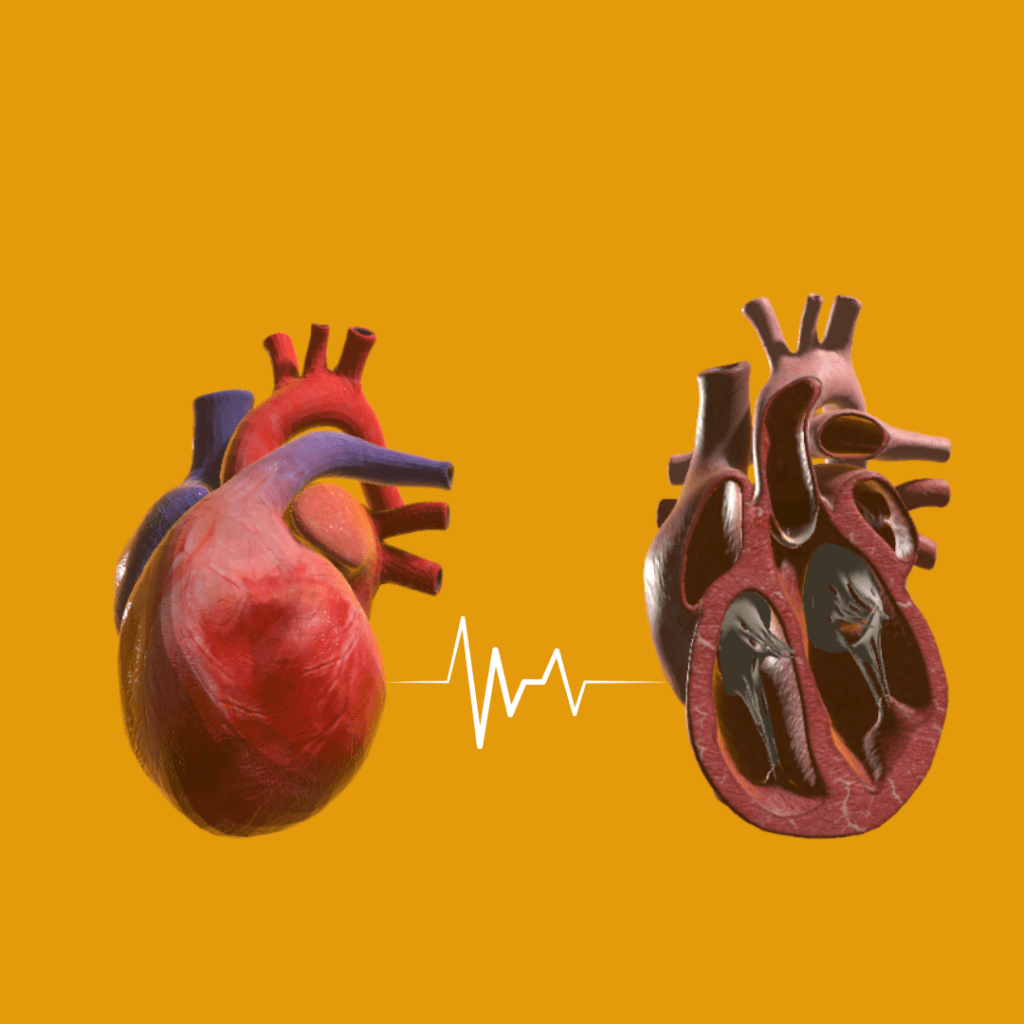The Heart valves
The heart valves are like ingenious little doorkeepers inside your heart, ensuring blood flows smoothly and in the right direction. There are four main valves, each playing a crucial role:
Tricuspid Valve
Location: Right atrioventricular (AV) valve, between the right atrium (upper chamber) and the right ventricle (lower chamber).
Function: Acts as a one-way gate, allowing blood to flow forward from the right atrium into the right ventricle but preventing it from flowing back. Imagine it like a valve on a bicycle tyre, only allowing air in and not letting it escape.
Structure: Three thin, leaflet-like flaps that come together to form a tight seal when closed.
Mitral Valve (Bicuspid Valve)
Location: Left atrioventricular (AV) valve, between the left atrium (upper chamber) and the left ventricle (lower chamber).
Function: Similar to the tricuspid valve, it ensures blood flows forward from the left atrium into the left ventricle and prevents backward flow. It’s like a high-security doorway that keeps oxygen-rich blood moving in the right direction.
Structure: Two strong, leaflet-like flaps that form a tight closure, resembling a double door.
Pulmonary Valve
Location: Right semilunar valve, located at the exit of the right ventricle.
Function: Acts like a one-way exit ramp, allowing deoxygenated blood to flow out of the right ventricle and into the pulmonary trunk, a short artery leading to the lungs for oxygen pickup. It prevents blood from leaking back into the ventricle.
Structure: Three pocket-like flaps shaped like crescents that come together to form a seal when closed.
Aortic Valve
Location: Left semilunar valve, located at the exit of the powerful left ventricle.
Function: This crucial valve acts like a strict checkpoint, allowing oxygen-rich blood to flow in one direction only: out of the left ventricle and into the aorta, the largest artery in your body, for delivery throughout the body. It prevents precious oxygen-rich blood from leaking back into the ventricle.
Structure: Three strong, pocket-like flaps that form a tight seal when closed, ensuring efficient blood flow forward.
How they work together?
These valves work in perfect harmony with the heart’s contractions. As the chambers contract and relax, the valves open and close at precise moments, directing blood flow in the correct sequence:
- Atria contract – AV valves open, allowing blood to flow into ventricles.
- Ventricles contract – AV valves close and semilunar valves open, allowing blood to flow out of ventricles (deoxygenated blood to lungs, oxygen-rich blood to the body).
- Ventricles relax – Semilunar valves close, preventing backflow, and AV valves can open again for the next cycle.
By working flawlessly together, these tiny valves play a vital role in ensuring a one-way flow of blood within your heart, keeping you healthy and your body functioning optimally.



